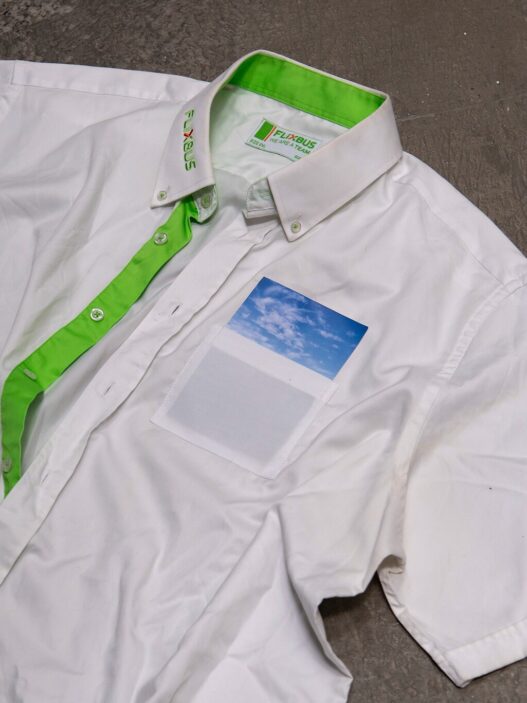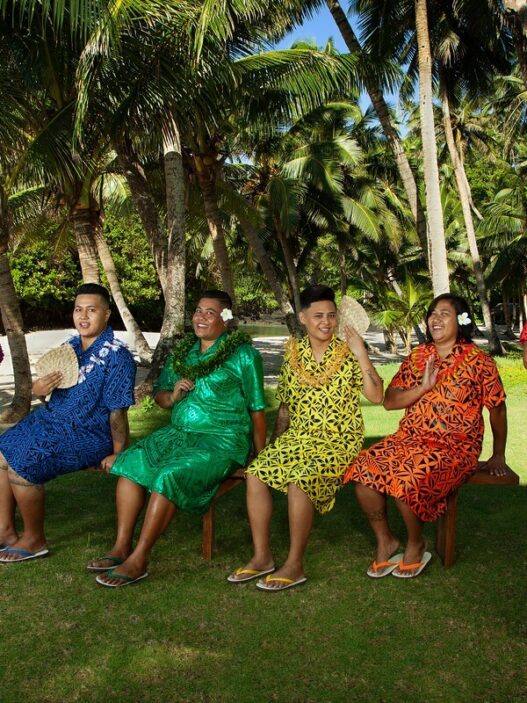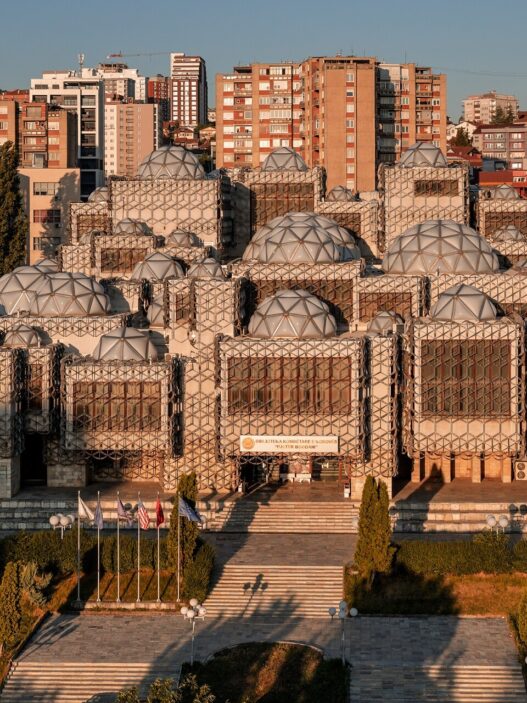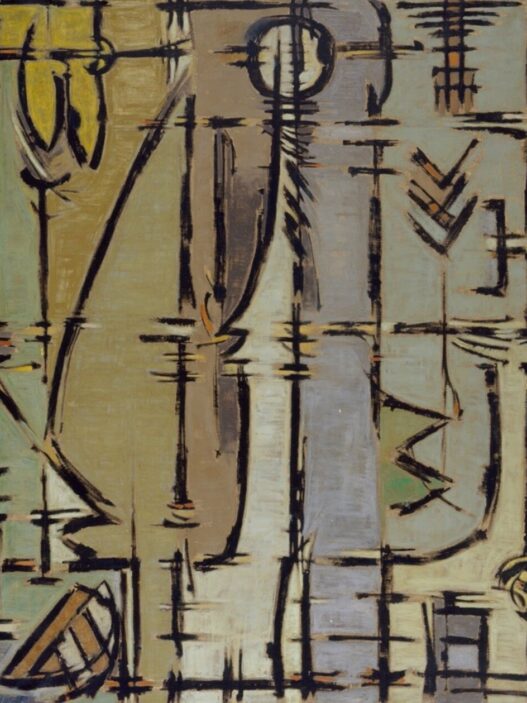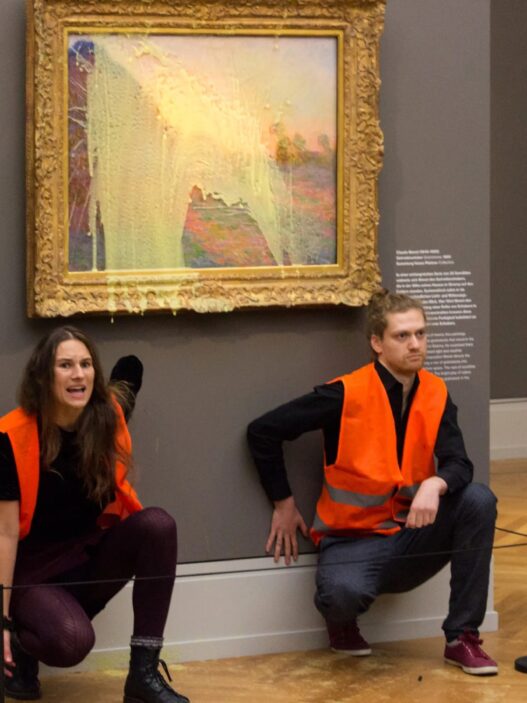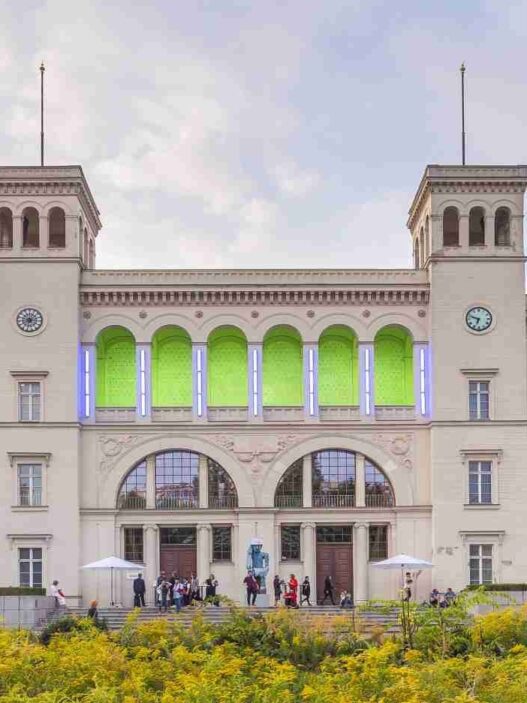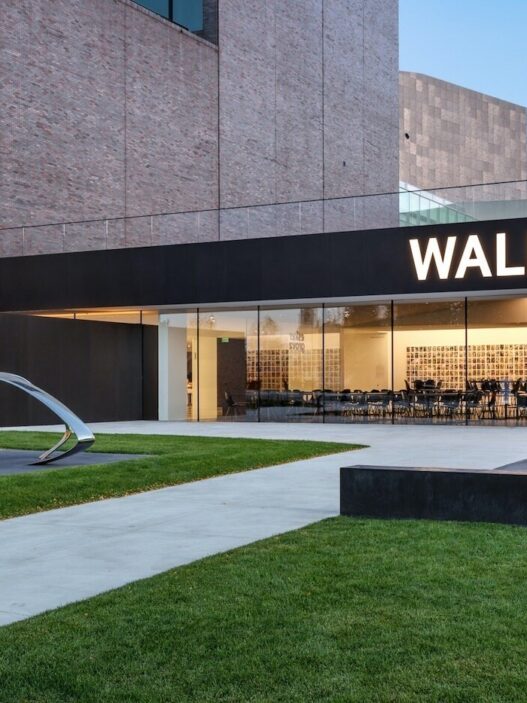The Globe of Glass by Katja Davar, a site-specific work of art created specifically for the entrance of the Fraunhofer Institute for Energy Economics and Energy System Technology (IEEnew )’s research facility in Kassel, Germany, has officially opened.
Globe of Glass is a large-scale, labyrinthine floor mosaic built in marble and other natural stone, an immersive drawing which invites people to interact with it playfully. It displays circular forms and cuneiform symbols, with the icon of SUN in its center metaphorically representing the future of our energy supply.
Questions of climate change and energy efficiency are becoming increasingly critical. The continued reliance on fossil fuels for economic growth has disastrous effects on the climate and the environment. The Fraunhofer IEE in Kassel concentrates its research on finding answers for the energy revolution, amongst others in the area of solar energy.
The title of Katja Davar’s work Globe of Glass, references to an article by Virginia Woolf, The Sun and the Fish from 1928, in which the author recounted the collective experience of a total solar eclipse on June 29, 1927. Witnessing the entire erasing of sunlight inspired the people present at the solar eclipse to consider the possible annihilation of civilization and to recognise the vulnerability and fragility of the earth. This is referred to in the text as a ‘globe of glass’.
The overlapping marble circles in Davar’s mosaic graphically sketch the chronological development of a solar eclipse while at the same time hinting to the circular form of the human eye. The eye serves as a protagonist in Virginia Woolf’s essay; it not only makes the emotional experience of the eclipse possible but also ensures its memorization, connecting the past and the present.
The Mesopotamian cuneiform symbol representing SUN is another important feature of the work Globe of Glass. Cuneiform script was developed around 3,300 years before our common calendar, in an area that is now mainly attributable to Iraq and Eastern Syria. It is the oldest known writing system and one of the most amazing achievements of humans as its introduction signaled the end of prehistory and the beginning of history. SUN is positioned in the centre of the forecourt.
Katja Davar uses the form of a labyrinth, a complex spatial system whose history dates back to antiquity. Her labyrinth is made up of circles and cuneiform wedges which can be understood as symbolic of an existential crisis or situation. In addition to this, the highly abstract cuneiform “wedge” elements in Globe of Glass act as a metaphor for experimentation and invention which might lead to the production of pioneering new ideas and the possible development of energy solutions for the planet. Günter Schleiff from the Kassel-based architectural practice HHS Planer + Architekten AG responsible for the institute’s new building, highlights the “synergy” of the design of the forecourt “with the building itself, its architecture and its content”.
Katja Davar is known for her precisely constructed drawings and animations that investigate the relationship between nature, technologies and society.
The Fraunhofer-Gesellschaft based in Germany is one of the world’s leading applied research organizations. Prioritizing key future-relevant technologies, it plays a major role in the innovation process.
Globe of Glass has been generously financed by the Federal Republic of Germany and the State of Hessen. The work is accessible seven days a week and 24 hours a day.
Fraunhofer IEE
Joseph-Beuys-Str. 8
34117 Kassel
Germany
www.iee.fraunhofer.de
Twitter / Instagram













